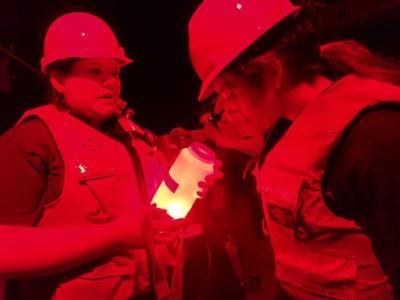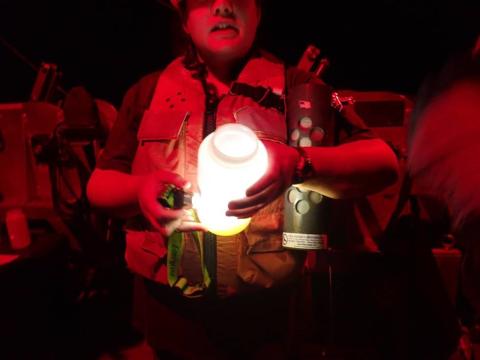Mysis diluviana, a small crustacean also known as the opposum shrimp, is an important component of the offshore Great Lakes food web. It feeds on smaller zooplankton and phytoplankton, while serving as a nutrient-dense food source for many Great Lakes fishes. Mysis may also compete with smaller fish for surrounding zooplankton and phytoplankton. This species typically resides in deep zones of the lake, where it stays near the bottom during the day and migrates up into the water column at night. Although it plays a key role in the food web, its response to widespread ecosystem changes that occurred across the Great Lakes in recent decades is poorly understood.
EPA Great Lakes National Program Office (GLNPO) cooperators at Cornell University recently published a study that summarized trends in Mysis populations across the Great Lakes from the 1990s through 2019. The study used Mysis data from long-term monitoring programs ran by multiple U.S. and Canadian agencies, including GLNPO’s Great Lakes Biology Monitoring Program, the only program that consistently monitors Mysis in all five Great Lakes. Additional datasets generated by collaborators at the U.S. Geological Survey (Lakes Michigan and Huron), the National Oceanic and Atmospheric Administration (Lake Michigan), and Fisheries and Oceans Canada (Lake Ontario) were also important for assessing within-lake trends and extending the time series into earlier years for Lakes Michigan (1995) and Ontario (1990). The timeframe of this study includes critical years during which significant ecological changes occurred in the Great Lakes, including declines in nutrient concentrations, the collapse of alewife, and the expansion of invasive mussels.
The authors characterized Mysis density and biomass trends, also referred to as abundance, in each lake during the study period. Mysis abundances in Lakes Superior and Ontario were consistently high from 1997 – 2019, although the Lake Ontario population did exhibit a long-term decline from early 1990s levels. Mysis abundance in Lake Michigan was also high at the beginning of the study period but declined sharply since the early 2000s. Abundance has been consistently low in Lake Huron after a moderate decline in the mid-2000s, and as expected the authors observed the lowest abundance in Lake Erie, where Mysis have limited deep habitat available.
The study also found that Mysis densities and growth rates were positively correlated with indicators of food availability (i.e., chlorophyll and zooplankton). These findings provide evidence for bottom-up regulation of Mysis, meaning that population trends may be governed by processes occuring at the bottom of the aquatic food web.
The full research paper, titled Intra-lake trends and inter-lake comparisons of Mysis diluviana life history variables and their relationships to food limitation, was published in the August 2023 issue of the Journal of Great Lakes Research. This study and the EPA Great Lakes Biology Monitoring Program are supported by the GLRI.



